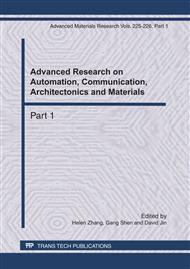p.1196
p.1200
p.1204
p.1208
p.1212
p.1218
p.1225
p.1230
p.1234
The Characteristics of Resident Travel in Beijing Xizhimen Transport Terminal
Abstract:
Transport Terminals are core facilities of urban transportation system, and the joint of different transportation in urban transportation network. Because of their functions and place, they are faced with huge traffic pressure. So the research about the characteristics of resident travel in transport terminals could provide theoretical support for urban transportation planning, organizing and managing, finally improve urban transportation satisfaction among residents. Against this background, Xizhimen as the research object is a representative transport terminal in Beijing. Based on large-scale investigation, on one hand, the characteristics of residents travel behavior are analyzed qualitatively; on the other hand, by building the Disaggregate Model, analyze the utility functions of different travel modes quantitatively, to find some controllable factors to optimize transport terminal and improve their satisfaction.
Info:
Periodical:
Pages:
1212-1217
Citation:
Online since:
April 2011
Authors:
Price:
Сopyright:
© 2011 Trans Tech Publications Ltd. All Rights Reserved
Share:
Citation:


